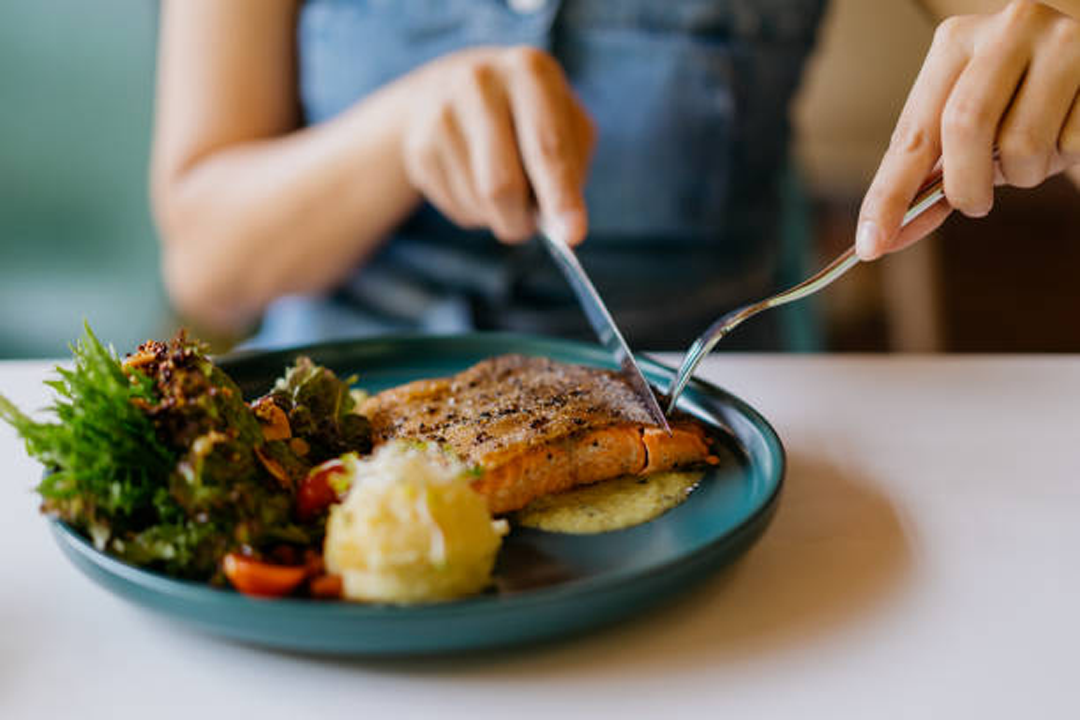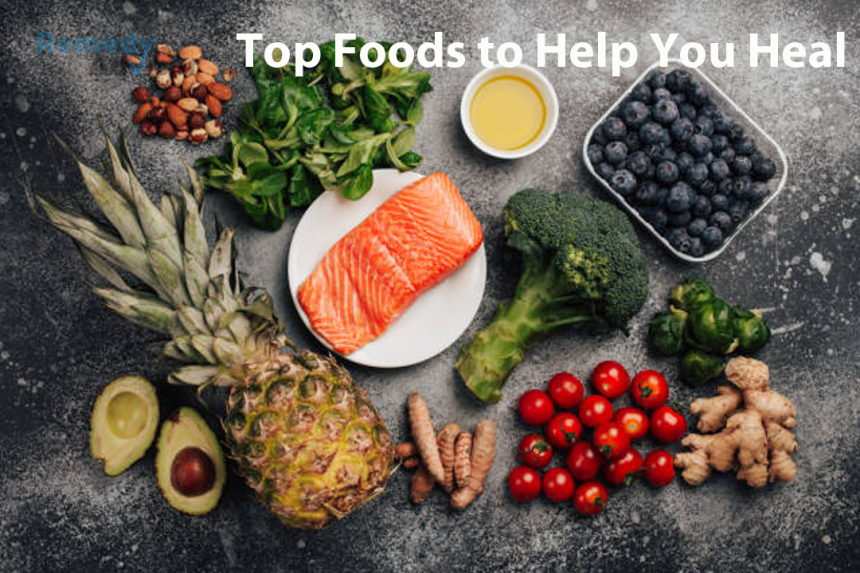It seems endless sometimes, the list of things you shouldn’t eat. Your entire childhood rang with gustatory prohibitions:
“You can’t have that, it’s too sweet.”
“No, don’t eat that, it’ll spoil your appetite.”
“Candy’s for after, not before and maybe not even after if you don’t straighten up and fly right, young man.”
“You want your hand back; you put that soda down now.”
It seems a wonder that any of us can even look at food, let alone eat it, after our mothers get through with us. But we do, and giving credit where credit’s due, our mothers probably have a lot to do with most of us keeping our teeth beyond age 40.
We, on the other hand, can take full credit for something else the belly sticking out over our taut leather belts is entirely and absolutely ours.
But not to worry: Food isn’t all bad. It keeps us alive, after all. And it can even do more than just keeps the candle burning. The right foods can help us fight off a disease before it gets a foothold, and beat it back when it does.
Fighting disease
“Foods really can’t be used to cure most major diseases, but they can be very effective in preventing a wide range of them,” says Brian Morgan, Ph.D.., acting director of the Institute of Human Nutrition at the College of Physicians and Surgeons of Columbia University.
“Nutrition is incredibly important, really. One obvious example of the relationship between food and disease is the high-fat diet, which puts you at high risk for cancer and heart disease. A diet low in saturated fats, on the other hand, will reduce your risk of heart disease significantly, while a low-fat diet across the board cutting back in quantity on all the different fats normally in your diet will reduce your risk of colon, breast and uterine cancer,” he says.
Low-fat eating may do more than just cut the risk. One study at the University Of Southern California School Of Medicine indicated that through drugs and a low-fat diet, heart disease could, in some cases, be reversed, something many cardiologists considered impossible.
“This study demonstrates that we now have the wherewithal to turn heart disease around in its early stages,”.
The ideal diet
Here is Dr. Morgan’s prescription for healthy eating.
Use proportion control.
“Everyone should try to arrange their food intake so that about 15 to 20 percent is protein, 50 to 60 percent is complex carbohydrates and 20 to 30 percent is fat. “The easiest way to achieve this balance of foods is just to make sure you eat balanced meals containing fresh fruits and vegetables, poultry and fish rather than just a ‘meat and potatoes’ diet.”
Get your fiber
“It seems clear that a high intake of insoluble fiber will reduce your risk of colon cancer and, less seriously, uncomfortable things like constipation,” he says. Good sources of insoluble fiber are wheat bran, nuts and green vegetables like cabbage, broccoli and Brussels sprouts.
Eat your vegetables
“Anything that’s red, like a tomato, orange, like a carrot, yellow, like squash, or dark green, like broccoli, has a lot of beta-carotene in it,”.“ Beta-carotene is a substance your body uses to manufacture vitamin A, and it appears that a diet high in beta-carotene will help protect against most types of cancer.”
In fact, researchers at the State University of New York at Buffalo compared the diets of 450 people with lung cancer to the diets of over 900 healthy people. They found that the people afflicted by lung cancer had a significantly lower beta-carotene intake than that of the healthy group.
Play it safe with antioxidants
“It’s starting to look like certain types of cancer are caused by free radicals, which are very active molecules that may act as irritants powerful enough to cause cancer,”. “Antioxidants the most powerful vitamin E, followed by vitamin C which help prevent free radical formation, should probably be well represented in the diet.”
Good food sources of E and C include wheat germ oil and sunflower seeds for E, citrus fruits and Brussels sprouts for C. Beta-carotene, incidentally, also soak up free radicals, although it’s not known if that’s the major cancer-prevention mechanism involved in its effects.
Eat fish on more than Fridays

“The omega-3 fatty acids found in fish oils appear to be protective against heart disease, probably by cutting blood cholesterol and triglyceride levels both significant risk factors for heart disease,”. “A small number of studies also indicate that it may help alleviate arthritis and other inflammatory diseases of the joints by reducing inflammation.”
Daily doses of fish oil led to modest but significant improvement in the symptoms of rheumatoid arthritis patients studied at Harvard Medical School and Albany Medical College. These were the first studies to show definite clinical effects of fish oil on an inflammatory disease.
But you don’t have to eat a lot of fish to get the benefits. The evidence we have now seems to indicate that someone who eats fish about three times a week gets the maximum protection.
Specific foods
Here are recommendations from Dr. Morgan for foods with healing potential.
Broccoli
A good source of fiber and beta-carotene that’s also high in vitamin C (the cancer-fighting antioxidant).
Pectin-rich fruits, such as apples, grapefruit and oranges
“The various pectin has been shown generally to help reduce blood cholesterol levels,” And although citrus fruits are the best natural sources, you have to be willing to eat the pith, or white parts lining the skin. “Realistically,” “the most effective way to get enough to do you any good is to add it to desserts.”
Oats
Oats in any form are an excellent source of fiber that has been shown to have a significant impact on blood cholesterol levels.
Peppers, all sorts
They are incredibly high in vitamin C.
Potatoes, including the sweet potato
Potatoes are basically a starch, without much fiber unless you eat the skin. They are, however, good sources of vitamin C, and the sweet potato is high in beta-carotene. And they may also help protect you against stroke.
Garlic and onions
“Garlic and onions may have the ability to lower blood cholesterol levels, but the evidence isn’t overwhelming,”.
Low-fat yogurt
“It’s a good source of calcium that’s also very low in fat,”. So, what’s so great about calcium? Well, it helps build stronger bones, for one thing.
And two Dutch studies have confirmed the findings of at least three earlier ones. They found that more calcium in the diet correlates with lower blood pressure.
Leafy, dark green vegetables
They’re high in beta-carotene and have significant amounts of iron and fiber.
Liver
“Liver’s great, lots of B-complex vitamins, lots of iron and good protein,” “The only problem with liver is that it has lots of cholesterol. Avoid it if you know you already have a problem with high cholesterol levels. If not, and you like it enjoy.”
Soybeans and soy products
“A great source of protein, soluble fiber, and B-complex vitamins,”. For vegetarians, soy can be important: It’s a complete protein all by itself.
Soybeans have one of the highest concentrations of protease inhibitors of any food. There is some evidence that these compounds may help cells in a precancerous stage revert to normal. Cells stay normal even after the protease treatment is stopped. Once a cell becomes cancerous, protease inhibitors can no longer help, however.







